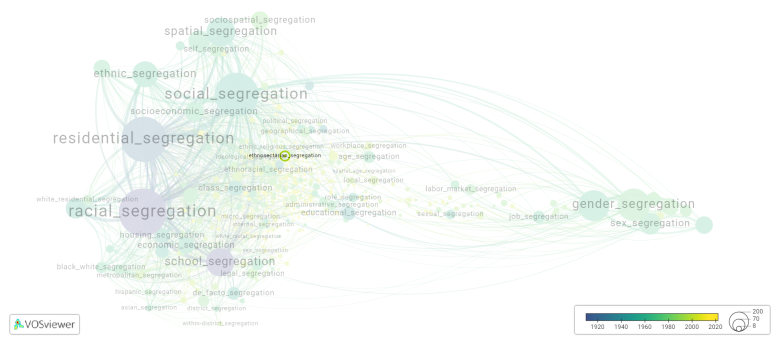Ethnosectarian segregation: Difference between revisions
(Creating page) |
(Creating page) |
||
| (One intermediate revision by the same user not shown) | |||
| Line 14: | Line 14: | ||
Efforts to address ethno sectarian segregation often involve promoting intergroup dialogue, fostering inclusive policies, and advocating for equal rights and opportunities for all communities. These initiatives aim to bridge divides, promote understanding, and build a more inclusive and cohesive society. However, addressing ethno-sectarian segregation is a complex and challenging process that requires a multifaceted approach, including political, social, and economic reforms, as well as sustained efforts to promote tolerance, acceptance, and empathy among different groups. | Efforts to address ethno sectarian segregation often involve promoting intergroup dialogue, fostering inclusive policies, and advocating for equal rights and opportunities for all communities. These initiatives aim to bridge divides, promote understanding, and build a more inclusive and cohesive society. However, addressing ethno-sectarian segregation is a complex and challenging process that requires a multifaceted approach, including political, social, and economic reforms, as well as sustained efforts to promote tolerance, acceptance, and empathy among different groups. | ||
===== Synonyms ===== | ===== Synonyms ===== | ||
The following terms are synonymous with: | The following terms are synonymous with ethnosectarian segregation: | ||
ethno sectarian segregation. | ethno sectarian segregation. | ||
| Line 26: | Line 26: | ||
[[File:ethnosectarian_segregation.png|780x780px]] | [[File:ethnosectarian_segregation.png|780x780px]] | ||
This visualization is based on the study [[Segregation_Wiki:About| The Multidisciplinary Landscape of Segregation Research]]. | |||
For the complete network of | For the complete network of interrelated segregation forms, please refer to: | ||
* | * [https://tinyurl.com/2235lkhw First year of publication] | ||
* | * [https://tinyurl.com/2d8wg5n3 Louvain clusters] | ||
* | * [https://tinyurl.com/223udk5r Betweenness centrality] | ||
* | * [https://tinyurl.com/244d8unz Disciplines in which segregation forms first emerged (Scopus database).] | ||
==References== | ==References== | ||
==Notes== | ==Notes== | ||
Latest revision as of 07:17, 16 October 2024
Date and country of first publication[1][edit | edit source]
2007
United Kingdom
Definition[edit | edit source]
Ethno sectarian segregation refers to the social, political, or geographical separation of different ethnic or sectarian groups within a society. This segregation typically arises from deep-rooted religious, cultural, or political differences between different groups.
Ethno sectarian segregation can be observed in several countries or regions around the world, including Northern Ireland, Israel and Palestine, Iraq, Syria, and Lebanon. In these places, there is a history of conflict and tension between different ethnic or sectarian groups, leading to the physical separation of communities.
This segregation is often reinforced by discriminatory laws or policies that limit interaction between different groups. It can result in limited access to resources, services, and opportunities for certain communities, leading to socioeconomic inequalities and further perpetuating divisions.
In some cases, ethno sectarian segregation is enforced through the creation of separate neighborhoods, schools, places of worship, and even separate legal systems for different groups. This separation can prevent meaningful contact, understanding, and cooperation between different ethnic or sectarian groups, exacerbating tensions and hindering the process of reconciliation.
Efforts to address ethno sectarian segregation often involve promoting intergroup dialogue, fostering inclusive policies, and advocating for equal rights and opportunities for all communities. These initiatives aim to bridge divides, promote understanding, and build a more inclusive and cohesive society. However, addressing ethno-sectarian segregation is a complex and challenging process that requires a multifaceted approach, including political, social, and economic reforms, as well as sustained efforts to promote tolerance, acceptance, and empathy among different groups.
Synonyms[edit | edit source]
The following terms are synonymous with ethnosectarian segregation:
ethno sectarian segregation.
References and literature addressing this segregation form under these synonymous terms can be found below.
See also[edit | edit source]
Related segregation forms[edit | edit source]
Ethnosectarian segregation is frequently discussed in the literature with the following segregation forms:
social segregation, spatial segregation, residential segregation

This visualization is based on the study The Multidisciplinary Landscape of Segregation Research.
For the complete network of interrelated segregation forms, please refer to:
References[edit | edit source]
Notes[edit | edit source]
- ↑ Date and country of first publication as informed by the Scopus database (December 2023).
At its current state, this definition has been generated by a Large Language Model (LLM) so far without review by an independent researcher or a member of the curating team of segregation experts that keep the Segregation Wiki online. While we strive for accuracy, we cannot guarantee its reliability, completeness and timeliness. Please use this content with caution and verify information as needed. Also, feel free to improve on the definition as you see fit, including the use of references and other informational resources. We value your input in enhancing the quality and accuracy of the definitions of segregation forms collectively offered in the Segregation Wiki ©.
Ethnosectarian segregation appears in the following literature[edit | edit source]
Murtagh B., Shirlow P. (2007). Spatial segregation and labour market processes in Belfast. Policy and Politics, 35(3), 361-375. Policy Press.https://doi.org/10.1332/030557307781571605
Shirlow P. (2016). Ethno sectarianism and the Construction of Fear in Belfast, Northern Ireland. Fear: Critical Geopolitics and Everyday Life, 193-206. Taylor and Francis.https://doi.org/10.4324/9781315582054-18
